Tips for Quality Run Training Train no faster than one pace quicker than the race you are training for. For example, 5k pace is good for an Olympic-distance race, while half-marathon pace suffices...
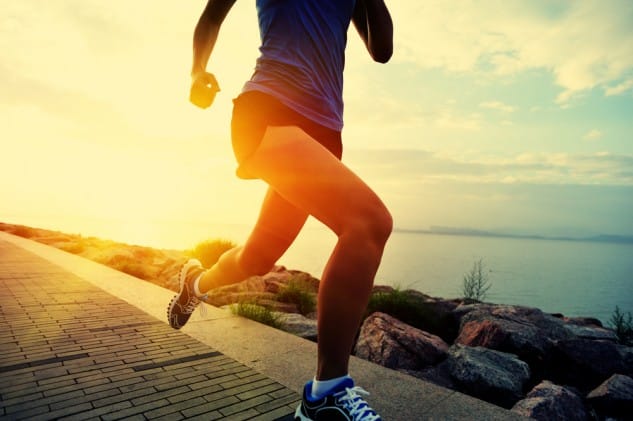

Tips for Quality Run Training Train no faster than one pace quicker than the race you are training for. For example, 5k pace is good for an Olympic-distance race, while half-marathon pace suffices...
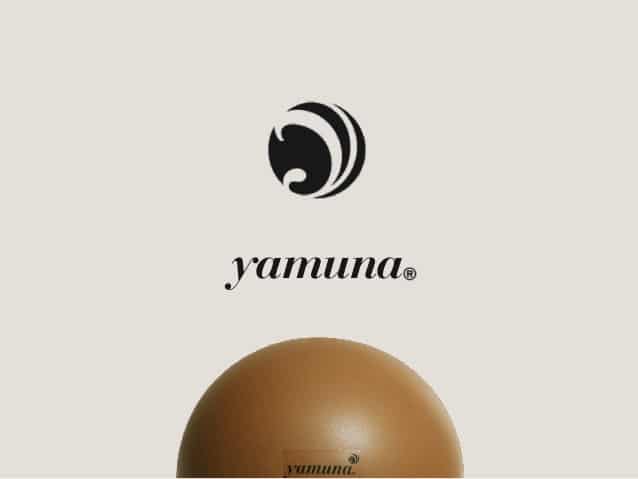
Being immersed in the fitness industry provides me with a ton of different opportunities to experience different techniques, methodologies, and products. I recently had the privilege of a...
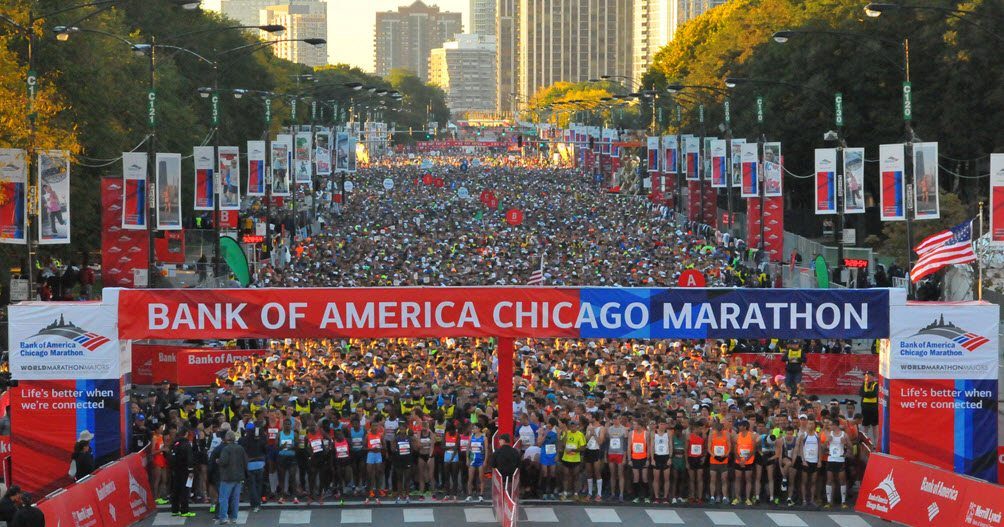
Leading up to the Chicago Marathon 2016 The Chicago Marathon provides an excellent course, plenty of support and, for me, a chance to visit home for a few days. It was no different for me this...

September 25 was going to be my day. The Ironman Augusta 70.3 triathlon was finally here. The race I had been training so hard for on one of my favorite courses. It was four-and-a-half months...

I have been an endurance coach for some time now. Once in a while, I receive an email from a client which chokes me up with pride. Today, I received one of those letters, so instead of sharing it...
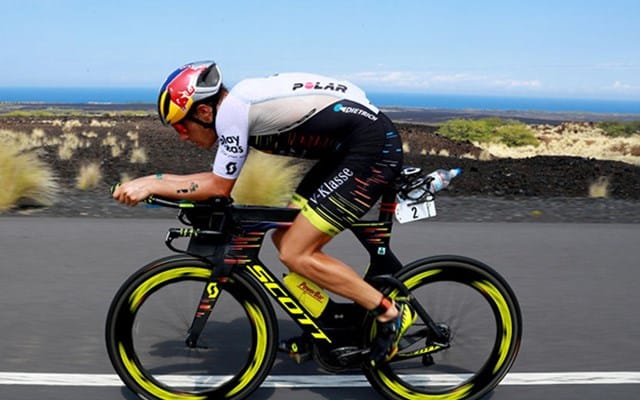
I found when looking for ways to get faster on the bike, is that there is so much information, from different coaches and experts, that it can be confusing and overwhelming. Personally, I...
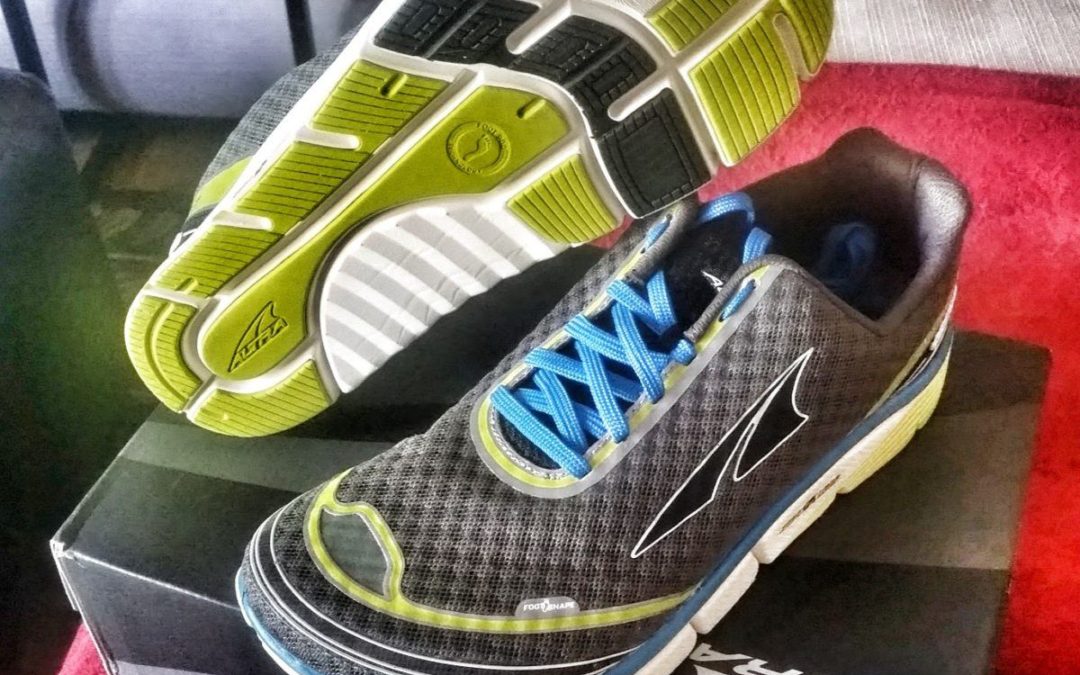
I have been a fan of the Altra line for a little while now, so I was so honored to be given a chance to review the brand new Altra Torin 2. I reviewed the 1.5 version when it first arrived, and it became my shoe of choice for long runs.
One of Altra’s significant differences in the complete line of shoes is their zero heel drop and since my coaching methodology includes an emphasis on our body’s natural movement while running this is obviously one of my favorites. (I have included a explanation of what “Zero Drop” means in my previous Altra Torin 1.5 review.)
The other difference between Altra and their competition is the wide toe box, or as Altra calls it, a “FootShape” toe box. The ability to splay the toes plays a significant role in injury prevention and the strength of the feet. This allows the runners body to support itself, rather tan relying on a shoe for support.
The upper has been improved in the 2.0. The Torin 1.5 was made with a thick upper which added unnecessary weight and reduced flexibility of the shoe. The 2.0 has been upgraded with a much thinner mesh material that breathes better and allows for more flexibility.
Here is where some of my favorite changes were made. First, they moved from the heavier EVA to their lighter proprietary “A-bound” material that for me seems to add a little more spring to the ride of the shoe. When my foot strikes the ground the material seems to not only protect from the natural impact, but reacts driving me forward.
The weight in the previous show was 10.1 ounces which was up from the original Torin which was 9.5 ounces. The Torin 2 comes in at 9.1 ounces which is one of the lightest in this category, if not the very lightest.
Altra added what they call Innerflex which are groves in the outsole and midsole that bend with your foot allowing substantially more flexibility than the previous models. This too me was the single most important change they made. The Torin has always classified as their High Cushioned shoe which most companies have traded flexibility for cushion. Altra has found a way to give runners the flexibility I love with the cushioning I want and without giving up any of proprioception.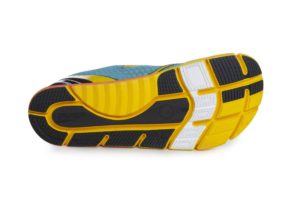
The have now included a Foot Pod technology which maps the bones of the foot with the Innerflex so the shoes flexes where the runner needs it to, allowing a near customized fit.
Altra went ahead and removed the toe guard and heel rudder as well. In my opinion this not only allowed them to shed some weight, but also added to flexibility and comfort. In a road shoe I never really thought either added any value. These two advantages are best left for trail specific designs.
Obviously, not much.
The new Abound foam tends to soak in water and sweat which makes the shoe feel a little heavier during training and racing. Even with the mesh material the shoe does not seem to drain well. I would love to see a version of this shoe with drain holes, but of course that is the triathlete in me talking.
After about forty miles the new Abound material started to squeak while just walking ,and only in my left shoe This does not seem to happen when I run in them, but it is a little noisy when walking through the store. I think it may be just a problem with this pair, but nonetheless it is something I dislike. However, it did not change the performance of the shoe.
The price of $125 is a little high in my opinion. A better price point would be the $100 – $110, but of course that is very minor for shoe of this quality.
Let’s see how the Torin 2 ranked on my scale:
Quality – 4/5
Upper – 4/5
Outsole – 4/5
Flexibility – 5/5
Comfort – 5/5
Appearance – 4/5
The Altra Torin 2 is available in men’s whole and half sizes 7-12.5, whole sizes 13-15 and in three color patterns. It is available in women’s whole and half sizes 5-10.5, whole sizes 11-12 and in three separate color patterns.
Please feel free to comment on your feedback.
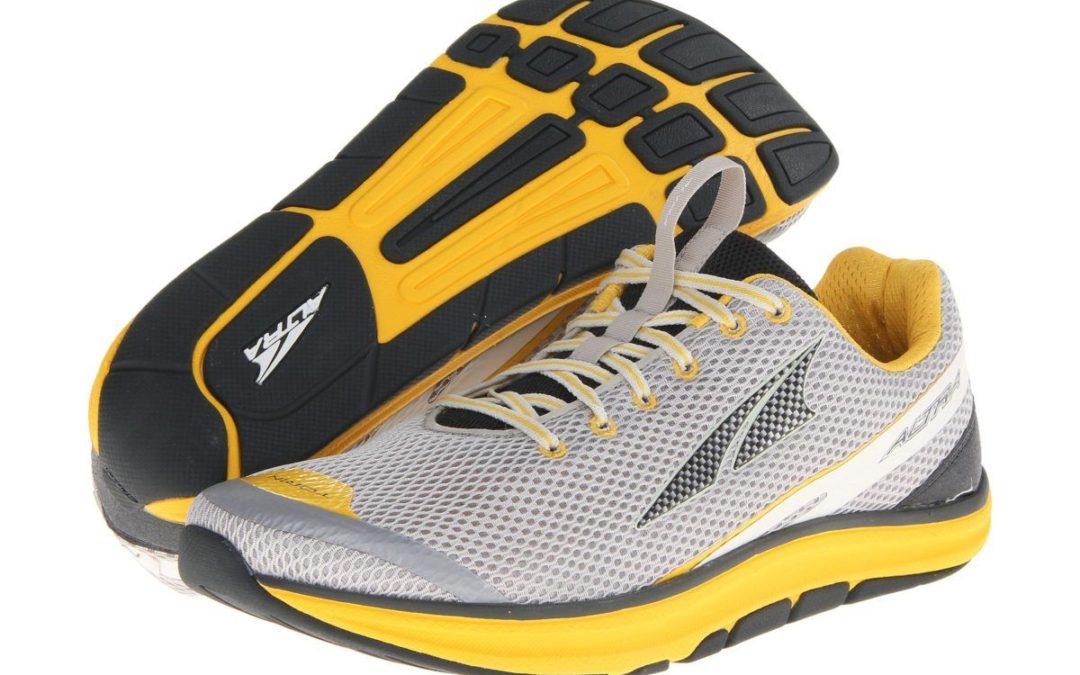
The quest for the best running shoe can be daunting, but the search for the best zero drop running shoes can be downright frustrating. The majority of all the Altra Zero Drop reviews I personally have read, the consensus is pretty positive, and in this instance, it will be no different, because in my opinion, it has resolved my issue of finding the best zero drop shoe on the market. The Altra Torin 1.5.
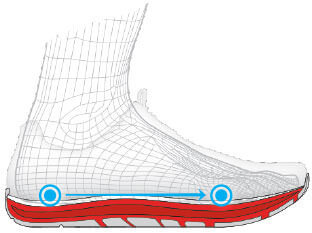
To define zero drop is to first define heel drop, which is the difference between the height of your heel off the ground minus the height of the ball of your foot. For instance, most of the traditional running shoes out there have a 12-millimeter drop.
The heel is raised 12 millimeters above the ball of the foot. This causes more emphasis on the heel when running because that is where most of the cushioning is. A more minimalistic shoe will have a drop that is much lower.
For instance, the Brooks Pure Flow has a 4 mm drop. This shoe is great for starting the transition to a more minimal shoe giving all the benefits of a minimal shoe without causing the injury of the drastic change from traditional to minimalistic.
The Altra Torin 1.5 is a complete zero drop where the ball and the foot and the heel are equal keeping the foot more natural like walking barefoot. While it has the zero drop of a minimalistic running shoe, it does provide the protection of a good amount of cushioning in the sole. This is one of the reasons I truly enjoy running in this shoe.
The upper is durable but is thick throughout. I personally like this, because I feel the security of the shoe without having to pull the laces tight. In my opinion, the laces should never be tight. Once the laces are tied they should really never have to be untied unless you are using a runners lace. The laces should be tight enough to secure the heel but no more. This allows the runner to support themselves rather than the shoe supporting the runner.
The Altra 1.5 has the same wide toe box that is consistent with the whole line of zero drop running shoes. I love the wide toe box because it allows me to have splay my toes and grab the road with more surface area. My feet do not feel crowded in this shoe.
Altra changed the laces in the 1.5 from the original model. They are now flat vs the round nylon laces and they reduced the number of holes on each side from 7 to 6. It provides more space between the touch of the laces to the foot and security in the sinch of the laces.
The shoe also seemed to have less seems and the addition of a strap that cinches the tongue to the upper. It helps the security of the foot in the shoe.
The outsole has not changed from the original Torin, but that is something I personally liked. There is enough cushion in the sole for protection without losing the feel for the road or trail underneath.
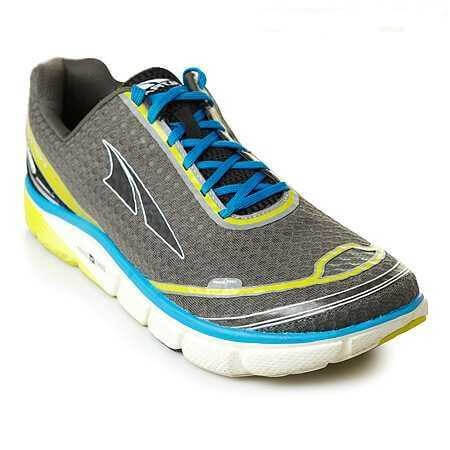
Altra Torin Original
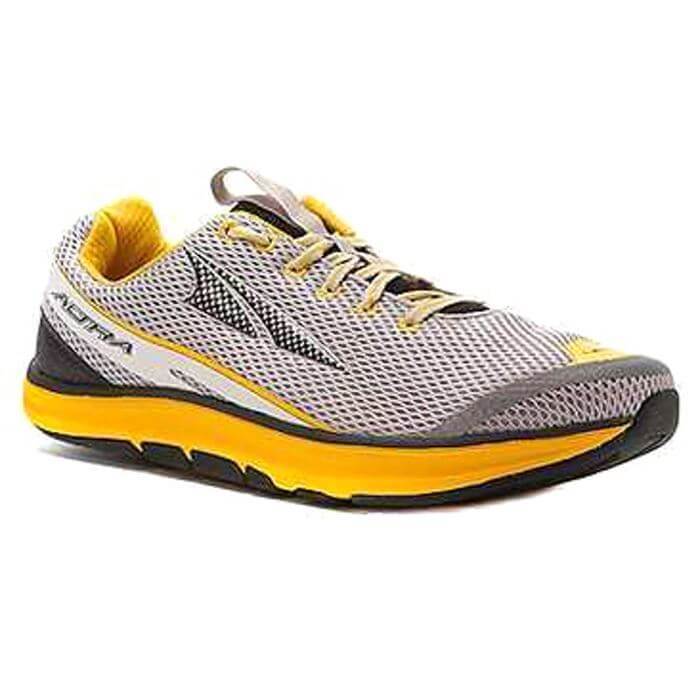
Altra Torin 1,5
The ride of this shoe is extremely comfortable. Of course, this is why I enjoy the Altra line in the first place. The ride is smooth with great responsiveness on the road.
The interesting part of the shoe is the weight. When upgrading a shoe from an original version, the thought would be that the weight could be dropped, but in the new Torin 1.5 has an extra ounce added. The shoes weigh 10.5 ounces versus the original Torins at 9.5 ounces.
The flexibility has not changed either. The Altra Torin or the Torin 1.5 are not the most flexible of shoes, but they do have enough flexibility to give a good lever and lift from the ground. I am chalking the lack of flexibility to the design of the shoe being for the road and not the trail. Trail shoes should have a little more flexibility for the technical terrain.
I do like the color of these versus the originals. The blue and orange weren’t bad, but they went a little more conservative with the grey, yellow and black. This is obviously a personal choice on the runner, but I thought I would put my two sense in.
The cost is a little more expensive at $120 dollars, but the shoes seem to last over 400 miles which most shoes will only last 250 to 300 before losing the cushion and ride comfort.
My Impressions:
Quality – 4/5
Upper-4/5
Outsole – 4/5
Flexibility – 3/5
Comfort – 4/5
Appearance – 4/5
Cost – 3/5

Here it is again, a long time since my last post. Life happens and when it does, watch out. It can really mess up the things you want to do versus the things you must do. I am learning to prioritize what is absolutely important to me versus what is important to everyone else. I hope to soon have that under control, but I digress.
Newton was nice enough to send me both a pair of the Newton Energy and the BOCO. I am reviewing them together since I have found they are the same shoe with the only difference being the BOCO has a tread that is made for the trails and the Energy is made for the road.
To be transparent and honest, I am a certified Newton Coach, so I am a little biased towards Newton. However, I rarely train in Newtons, as running is very personal I have my favorite running shoes to train in.
I do however, love the methodology behind them. For those that do not know, Newton running shoes have 5 lugs in the front of the shoe directly under the ball of the foot. The lugs have a higher or lower profile depending on the shoe.
The lugs serve as a reminder for running form by automatically driving the foot to land on the fore or mid foot, reducing the impact dramatically.
When paired with Newton Natural Run training, the shoe will decrease the effort level of transitioning to a mid or forefoot runner.
In my experience, after the runner has developed the habit, they no longer need to be running in Newtons, but most do not only due to muscle memory, but they also last about 4 times longer than other running shoes.
Prior to the release of the Energy, the core products Newton produced were the Motion, the Isaac, the Gravity and the Distance. These models needed a transition period for the runner to get used to the way the lugs lifted the heel causing some calf soreness.
The Energy now has a lower profile of lug, and a transition plate which actually allows the athlete very tiny transition period, if any, before the comfort of the shoe settles in.
The EVA foam that makes up the sole of the shoe is extremely comfortable and highly accommodating to the road.
The only conflicts I have heard is the heel cup is a little shallow for some, causing some slippage during long runs.
Since one of the core beliefs of natural runners is that shoes should be tied just tight enough to secure the heel, this could be a problem. I have always taught, the athlete needs nothing to support but themselves.
In other words, if the shoe is tied too tight, the shoe ends up supporting the runner. By tying the shoes very light and only tight enough to secure the heel, the feet, the calves, the ankles are strengthened with every activity.
I personally have not found an issue with the heel cup even without the help of a runner’s lace, but I have heard of the issues.
I did get an eleven-mile run on the trails with the Newton BOCO and was I surprised at how well the tread grabbed the terrain. 
The trails I was running were meant for Mountain Bikes and that meant steep climbs and steep downhills and there was not a moment I did not feel secure.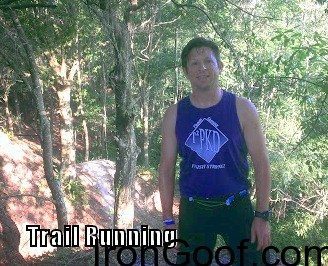
For new runners or for athletes transitioning to more efficient technique, I believe the Energy is the perfect shoe. They are the perfect shoe to transition with before trying one of the core Newton models.
The BOCO is a great trail shoe for anyone wishing to start or continuing a journey into trail running. They are comfortable, supportive and made me feel completely secure on the trails.
That’s my opinion and I am sticking with it. Happy Running!
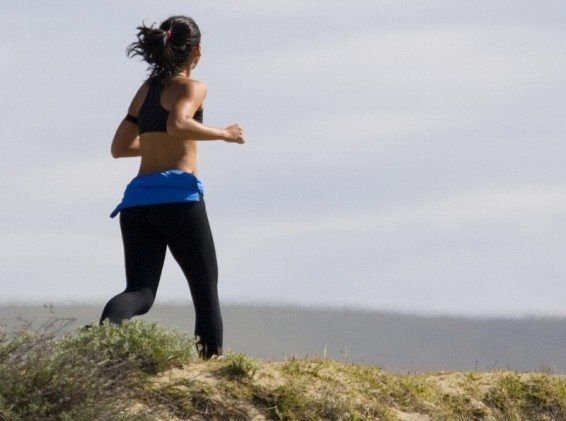
I can hear it now….”Know wonder they call you a Goof…you are crazy.”, “So, if I run slower I will get faster? You are out of your mind.” It was not to long ago I used to think the same thing, but as with everything I post, there are reasons and science to back it up.
Let’s face it, logic would dictate that pushing the pace of your easy days, as close to race pace as possible, would help you get fit faster and help you speed up, right? A lot of coaches, including myself, will tell you to run slow on your easy days, and easy days should be making up anywhere from 50-75% of your weekly mileage.
I have clients continuously asking me, “why are my easy days so slow?” The latest is my famous sit downs with my runners telling them to slow down after examining their data and finding them running tempo speeds during an easy day.
The answer to the question is what Arthur Lydiard and most other coaches would call the aerobic system. The aerobic system, or aerobic development, is the one of the most important fundamentals into unlocking your true potential.
Let us first check the stats on the energy contribution the aerobic system provides for races. As you can in the chart below, even the shorter events like the mile, over 80% of the energy required to run the race is produced via the aerobic system.
Aerobic training is the scientific fact that to move your body at higher intensities, the body needs to break down sugar and convert it to glycogen so it can be used as energy.
The aerobic system plus oxygen starts a chemical reaction known as Aerobic Glycolysis which continuously powers continuous endurance activities. In the aerobic system energy ATP is produced through Pyruvic Acid and Lipid/Protein fragments entering the Kreb Cycle and the Electron Transport Cycle.
Uh…what?
During aerobic respiration (yeah, that’s breathing) the body uses all the oxygen it needs to power the muscles. When you are running in your “aerobic zones” (easy runs), your muscles have enough oxygen to produce all the energy they need to perform.
See? Improving your capacity to transport and efficiently use all the available oxygen to produce energy will enable you to race faster since this makes up 85-99% of the energy needed to race.
Since running easy is aerobic development, what better way is there to train the aerobic system? There is none.
Capillary development – capillaries are the smallest of the body’s blood vessels and they help deliver oxygen and nutrients to the muscle tissues while exporting waste products out. The larger the number of capillaries you have surrounding each muscle fiber, the faster you can transport oxygen and carbohydrates to your muscles.
Aerobic training (easy running) increases the number of capillaries per muscle fiber, thus improving how efficiently you can deliver oxygen and fuel to your working muscles and how quickly they can clear waste products.
Myoglobin is a protein in the muscles that binds the oxygen that enters the muscle fiber. When oxygen becomes limited during intense exercise, myoglobin releases oxygen to the mitochondria to produce more energy.
The more myoglobin you have in the fibers of your muscles, the more oxygen is transported under aerobic stress. Like, uh, during a race. Aerobic training increases the amount of myoglobin you have in your muscle fibers.
Mitochondria are microscopic organelle found in your muscles cells that contribute to the production of ATP (energy). In the presence of oxygen, mitochondria breakdown carbohydrate, fat, and protein into usable energy.
Therefore, the more mitochondria you have, and the greater their density, the more energy you can generate during exercise, which will enable you to run faster and longer.
Aerobic training increases both the number and the size of the mitochondria in your muscle fibers.
Suffice it to say that aerobic development is the single most important factor to long-term development.
Of course, track workouts, VO2 max sessions, tempo runs and cross training will increase your fitness and are still incredibly important to racing faster. However, nothing will help improve continuously like developing the aerobic system.
Aerobic development is dependent upon running in your aerobic zones (for my runners Zones 1-3). This is why running faster on your easy days develop the aerobic system. Once you step out of those aerobic zones, on easy runs you diminish development of your aerobic system, but you also increase the chance for injury. Nope, two negatives do not make a positive in running.
This is one of the single biggest mistakes runners of all experiences make in their training.
As a coach and trainer I have always distinguished myself because I am always able to give my clients and readers the “why”. (Sometimes my clients end up telling me to just shut my mouth. when I am training with them because I am continuously telling them why they are doing each movement of an exercise or workout. I guess it may not be an advantage all the time. Go figure.)
Scientific research has been able to identify how the aerobic system adapts and responds to certain training paces. Physiologically we know:
It is pretty clear now right? Your optimal easy run pace for aerobic development is between 55 and 75 percent of your 5k pace, with the average pace being about 65 percent.
It’s also evident that running faster than 75% of your 5k pace on your long run has very little additional physiological benefit.
In fact, the research indicates that it would be just as advantageous to run slower as it would be to run faster. Running around half of your 5k pace is pretty easy right? Wouldn’t you know it, the evidence is clear that it still provides near optimal aerobic development.
Feel free to let me hear your feedback. I welcome any other case studies, personal experiences and other research as I am always learning. I provide you with the best content I can, but I have an open-mind and know that there may be other research out there that may negate information I post.
~IronGoof
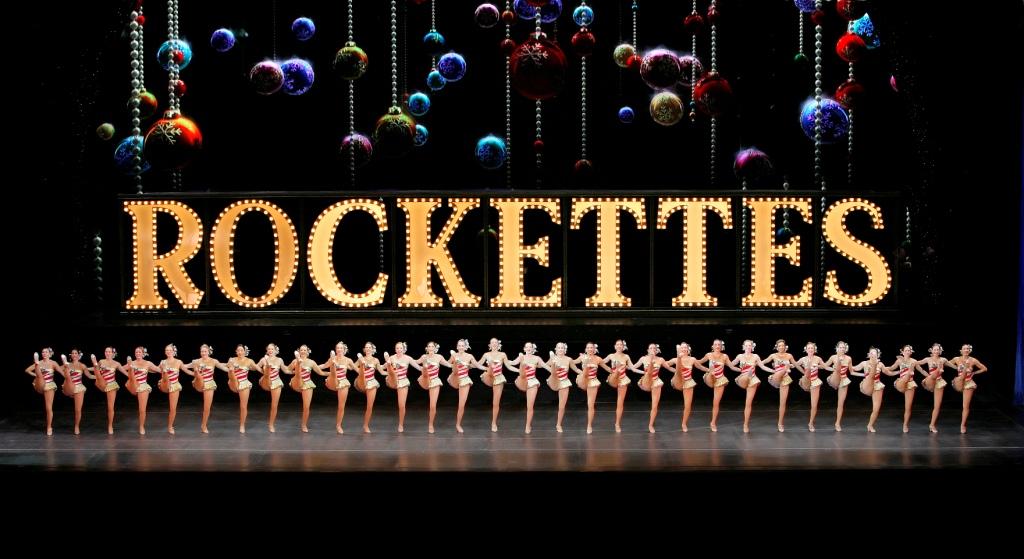
Can you feel the magic of Christmas in the air? With all the urgency of completing our shopping before that December 25th deadline sometimes we don’t slow down enough to enjoy just the simplicity of the holidays. I spent a majority of my life in the Midwest, so living here, in this snowless climate, I usually find myself missing the aura of the holiday season. Not this year, Baby. I was lucky enough to be an audience member for the opening of the Radio City Christmas Spectacular starring the Rockettes at the David A. Straz Center here in Tampa.
Out of all the time I spent in New York City, I never had the privilege of seeing the Rockettes at Radio City Music Hall. I’ve been missing out. Even this former performer was amazed with the synchronicity and precision of not only the dancing of the Rockettes themselves, but the remarkable coexistence with several different types of media.
The festivities started an hour before the audience was even allowed into their seats, with the Rockettes marching from the stage door to the red carpet outside Carol Morsani Hall. With pure elegance and grace each Rockette took an arm of an uniformed Tampa Police Officer and were escorted into the theater. It was a pure showing of honor to our civil servants that was so simple yet so powerful. I cannot begin to explain why. I imagine that is the limitations of my writing ability. The honor didn’t stop there. The Tampa Police Chief took an opportunity to read “Twas the Night Before Christmas”, on stage, to a group of children at the opening of the show. Again, it seemed like such an honor to the chief and our civil servants.
The night consisted of 12 different numbers lasting about 96 minutes including a 20 minute intermission, but it flew by so fast. The night was narrated by Santa Claus, who also sang with a booming baritone voice that projected proudly throughout the arena.

All of the numbers were not strictly performed by the Rockettes and Santa Clause. A few numbers included short plays that not only included singing and dancing, but also small life lessons as well.
One number had Santa and two young boys with a lesson on faith and believing, another was a brilliant combination of the Rockettes and the Radio City Singers about Christmas in New York City.
My personal favorite had to be a scaled down performance of the Nutcracker with a little girl playing Clara, that was an absolute phenomenal dancer, not to mention other incredible dancers in oversized animal costumes. I have no idea how the dance so gracefully with those huge heads.
This show was brilliant, funny, emotionally moving and just plain fun for the whole family. The Rockettes give a performance worth seeing in this wonderful holiday show.
I give it Five out of Five Goofs.

The Radio CIty Christmas Specatacular plays at the Straz Center for the Performing Arts, December 12th through the 29th Tues thru Sunday. See the Straz Center Website for details. http://www.strazcenter.org/Rockettes.aspx